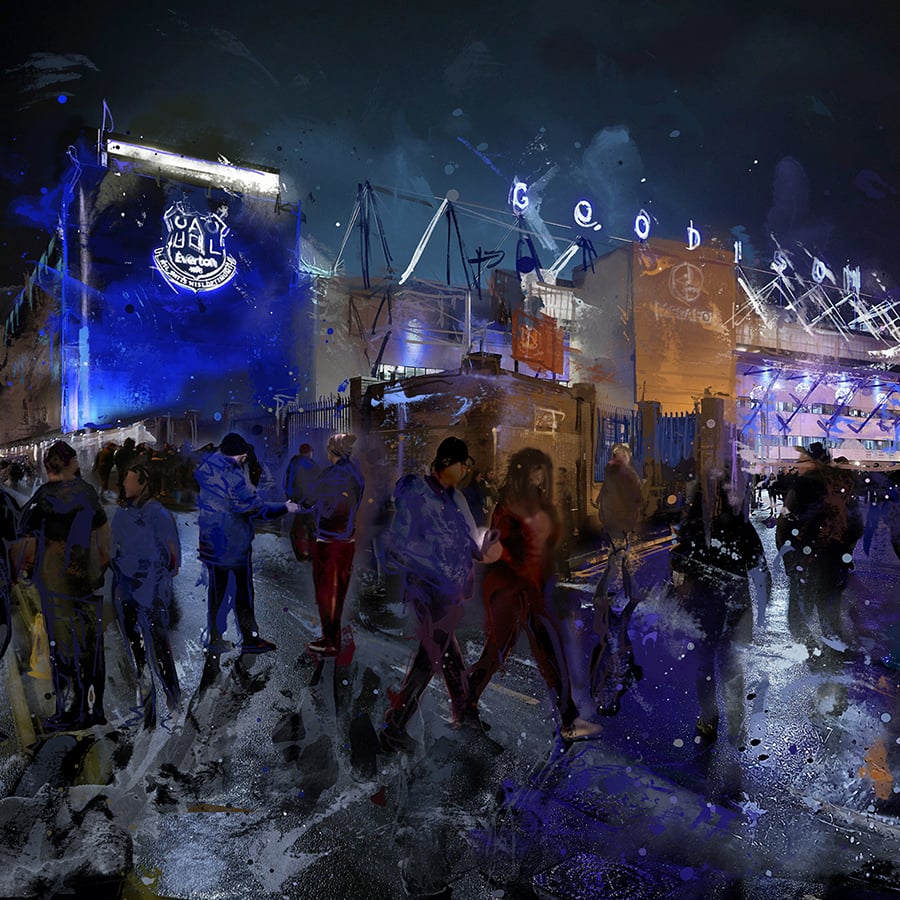
Install the app
How to install the app on iOS
Follow along with the video below to see how to install our site as a web app on your home screen.

Note: this_feature_currently_requires_accessing_site_using_safari
You are using an out of date browser. It may not display this or other websites correctly.
You should upgrade or use an alternative browser.
You should upgrade or use an alternative browser.
Wellington Dock next door was a £200m extension to the Sewage works which was also a working dock prior.
It was achieved by sealing it with a cofferdam, pumping in thousands of cubic meters of sand to displace the water (so the walls don't collapse) then drilling thousands of concrete piles to sit the plant on. This was a lengthy and costly part of the constitution. I'd imagine BM would require something similar
It was achieved by sealing it with a cofferdam, pumping in thousands of cubic meters of sand to displace the water (so the walls don't collapse) then drilling thousands of concrete piles to sit the plant on. This was a lengthy and costly part of the constitution. I'd imagine BM would require something similar
Wellington Dock next door was a £200m extension to the Sewage works which was also a working dock prior.
It was achieved by sealing it with a cofferdam, pumping in thousands of cubic meters of sand to displace the water (so the walls don't collapse) then drilling thousands of concrete piles to sit the plant on. This was a lengthy and costly part of the constitution. I'd imagine BM would require something similar
You seem to have more of a grasp of that stuff than me. But didnt they look at that before they extended?
Yes they did look at it. It was years in the planning, but ultimately they had no choice but to build there so cost didnt really come into it.You seem to have more of a grasp of that stuff than me. But didnt they look at that before they extended?
The footprint of the existing site was to small. They added a secondary treatment plant on Sandon Dock in 1998 but it couldnt meet new compliance levels. With no more room on Sandon the Wellington dock was the only option
tommye
Player Valuation: £100m
The geology of Merseyside in northwest England largely consists of a faulted sequence of Carboniferous Coal Measures rocks overlain in the west by younger Triassic and Permian age sandstones and mudstones. Glaciation during the present Quaternary Period has left widespread glacial till as well as erosional landforms. Other post-glacial superficial deposits such as river and estuarine alluvium, peat and blown sand are abundant.Also, pretty sure that the whole of Merseyside rests on a huge slab of sandstone, that has supported the weight of Liverpool, and most of the Wirral, since they were invented.
Carboniferous
Carboniferous rocks underlie all of Merseyside but are only exposed to the east of the north-south Boundary Fault. The sequence encountered locally comprises (in descending order, youngest at top)
- Warwickshire Group(formerly the 'Barren' or 'Red Measures')
- Pennine Coal Measures Group(sometimes formerly the 'Productive' or 'Grey Coal Measures')
- Millstone Grit Group
- Gastrioceras subcrenatummarine band
- mudstone
- Six Inch Mine (coal seam)
- mudstone
- Sand Rock Mine (coal seam)
- mudstone
- Rough Rock
- mudstone
- Upper Haslingden Flags
- mudstone
- Lower Haslingden Flags
- mudstone
- Holcombe Brook Mine (coal seam)
- mudstone
- Holcombe Brook Grit
- mudstone
- Brooksbottom Grit
- mudstone
Hope that helps

Baldynut
Player Valuation: £1m
I know the sourceJust passing it on mate, not sure on its source.
Frang
Player Valuation: £70m
the weight of the stadium PLUS the weight of the crowd means that the foundations have to be spectacularly solid.
if there is unstable ground as suggests then the costs will quite quickly spiral out of control..
you can not compare the foundations for a sewage plant with the foundations of a stadium that will house 50,000 people.. totally incomparible.
So does that mean we need a bigger shovel?The geology of Merseyside in northwest England largely consists of a faulted sequence of Carboniferous Coal Measures rocks overlain in the west by younger Triassic and Permian age sandstones and mudstones. Glaciation during the present Quaternary Period has left widespread glacial till as well as erosional landforms. Other post-glacial superficial deposits such as river and estuarine alluvium, peat and blown sand are abundant.
Carboniferous
Carboniferous rocks underlie all of Merseyside but are only exposed to the east of the north-south Boundary Fault. The sequence encountered locally comprises (in descending order, youngest at top)
The oldest rocks to appear at or near the surface within the county are from the Namurian Epoch. These are alternate units of sandstone ('flags' and 'grits') and mudstone with occasional coal seams (known locally as 'mines') forming a part of the Millstone Grit Group. They are brought to the surface on the eastern side of the Upholland Fault and dip eastwards beneath Billinge Hill. The full Namurian sequence hereabouts is:
- Warwickshire Group(formerly the 'Barren' or 'Red Measures')
- Pennine Coal Measures Group(sometimes formerly the 'Productive' or 'Grey Coal Measures')
- Millstone Grit Group
Overlying the Millstone Grit sequence is the thick Westphalian sequence of sandstones, mudstones and coal seams collectively referred to as the Pennine Coal Measures Group and which forms the Lancashire Coalfield, the western part of which extends into Merseyside....
- Gastrioceras subcrenatummarine band
- mudstone
- Six Inch Mine (coal seam)
- mudstone
- Sand Rock Mine (coal seam)
- mudstone
- Rough Rock
- mudstone
- Upper Haslingden Flags
- mudstone
- Lower Haslingden Flags
- mudstone
- Holcombe Brook Mine (coal seam)
- mudstone
- Holcombe Brook Grit
- mudstone
- Brooksbottom Grit
- mudstone
Hope that helps
tommye
Player Valuation: £100m
Might need to get a JCB in at some point. Just connect the dots. All becomes obvious...So does that mean we need a bigger shovel?
SpongeBob brown shoes
Player Valuation: £40m
the weight of the stadium PLUS the weight of the crowd means that the foundations have to be spectacularly solid.
if there is unstable ground as suggests then the costs will quite quickly spiral out of control..
you can not compare the foundations for a sewage plant with the foundations of a stadium that will house 50,000 people.. totally incomparible.
Google's 'how heavy is the poo factory on the dock road'
Frang
Player Valuation: £70m
more like an owner with bigger pocketsSo does that mean we need a bigger shovel?
Usminov is the man, nobody has got bigger pockets than him his kecks are 56 waistmore like an owner with bigger pockets
Juddablue
Player Valuation: £750k
Not a chance. Do you realise how many Millons of litres of liquid are in the Tanks that are sat on the Wellington Dock. It's a double decker plant with 16 enormous tanks all constructed out of reinforced concrete.the weight of the stadium PLUS the weight of the crowd means that the foundations have to be spectacularly solid.
if there is unstable ground as suggests then the costs will quite quickly spiral out of control..
you can not compare the foundations for a sewage plant with the foundations of a stadium that will house 50,000 people.. totally incomparible.
What ever goes in the BM will be light weight in comparison even with the people


Blue Skies
ORDER NOW

Everton Mishmash
Check It Out!

Everton Pint Glass
ORDER NOW

Support GOT
With A Subscription

The Holy Trinity Everton T-Shirt
Order Now!

Goodison Park Print
Order Now

Holy Trinity
Order Now

Legends of Goodison Park
Order Now!

Shop with Amazon
+ Support GrandOldTeam

Everton Shirts
Order Now

Everton Mishmash Jigsaw
Order Now

Match Day Print
ORDER NOW

Goodison Park
ORDER NOW

Goodison Welcome
BUY NOW

Bramley Moore Everton T-Shirt
Order Now!
